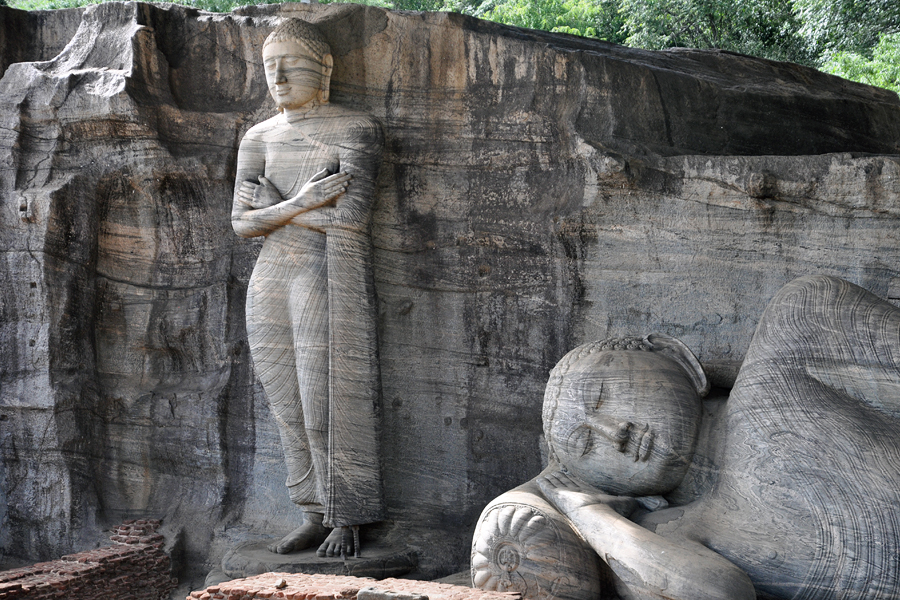Home
Discover the Enchanting Polonnaruwa Ancient City: A UNESCO World Heritage Site in Sri Lanka
Polonnaruwa Ancient City, a UNESCO World Heritage Site, stands as a testament to the grandeur of Sri Lanka’s medieval history. This ancient city, which served as the second capital of Sri Lanka after Anuradhapura, is a treasure trove of archaeological wonders, cultural relics, and architectural masterpieces. Nestled in the North Central Province of Sri Lanka, Polonnaruwa is a must-visit destination for history buffs, culture enthusiasts, and spiritual seekers.


Polonnaruwa rose to prominence in the 11th century CE, following the decline of Anuradhapura. Under the reign of King Vijayabahu I, who liberated the city from South Indian Chola invaders, and his successors, Polonnaruwa flourished as a vibrant capital and a major center of commerce and religion. The city’s zenith was reached during the reign of King Parakramabahu I (1153-1186 CE), who implemented extensive irrigation systems and monumental constructions, transforming Polonnaruwa into a hub of prosperity and cultural brilliance.


Polonnaruwa Ancient City is renowned for its exquisite architecture, well-preserved ruins, and intricate stone carvings:

The Royal Palace Complex: The heart of the ancient city, the Royal Palace Complex, built by King Parakramabahu I, is a stunning example of medieval Sri Lankan architecture. The ruins include the massive palace itself, believed to have been seven stories high, the Council Chamber, and various other buildings that showcase the grandeur of the past.

Gal Vihara: One of Polonnaruwa’s most iconic sites, Gal Vihara is a rock temple featuring four magnificent Buddha statues carved out of a single granite rock. The statues, representing different postures of the Buddha—seated, standing, and reclining—are masterpieces of Sinhalese rock carving and are revered for their serene and spiritual aura.

Parakrama Samudraya: This colossal man-made reservoir, also known as the Sea of Parakrama, was constructed by King Parakramabahu I. Spanning over 2,500 hectares, the reservoir was an engineering marvel designed to irrigate the surrounding lands and support the city’s agricultural needs. Today, it remains a vital water source and a scenic attraction.

Sacred Quadrangle: The Sacred Quadrangle, or Dalada Maluwa, is a compact group of impressive religious structures that include the Vatadage (a circular relic house), the Thuparama Image House, and the Hatadage (a relic shrine). This area reflects the spiritual significance of Polonnaruwa and showcases the intricate craftsmanship of the period.

Rankoth Vehera: This massive stupa, constructed by King Nissanka Malla, stands 55 meters tall and is a prominent symbol of Polonnaruwa’s religious heritage. The stupa’s name translates to “Gold Pinnacle,” and it remains a revered site for Buddhists.

Polonnaruwa Ancient City is not just an archaeological wonder but also a living cultural landscape where traditional practices and rituals continue. The city hosts several Buddhist festivals and ceremonies, drawing pilgrims and tourists alike. Key events include the Duruthu Poya, celebrating the first visit of the Buddha to Sri Lanka, and Poson Poya, which commemorates the introduction of Buddhism to the island.


Enhance your visit to Polonnaruwa Ancient City by exploring the surrounding attractions:





Polonnaruwa Ancient City offers a mesmerizing journey into Sri Lanka’s medieval past, showcasing the architectural brilliance, engineering marvels, and spiritual heritage of a bygone era. Whether you are a history aficionado, an archaeology enthusiast, or a spiritual explorer, Polonnaruwa provides an enriching experience that will leave you in awe of Sri Lanka’s cultural legacy.
Embark on a journey to Polonnaruwa and uncover the stories etched in stone, wander through the ruins of royal palaces and sacred temples, and immerse yourself in the serene beauty of this ancient city. As a UNESCO World Heritage Site, Polonnaruwa stands as a monument to the ingenuity, devotion, and artistic achievements of Sri Lanka’s illustrious past.



This is the official website of the Ministry of Tourism, Republic of Indonesia. The contents listed on this website are intended for informational purposes rather than commercial. Any displayed sale is meant as a token of partnership and will always redirect you to our partners’ sites.